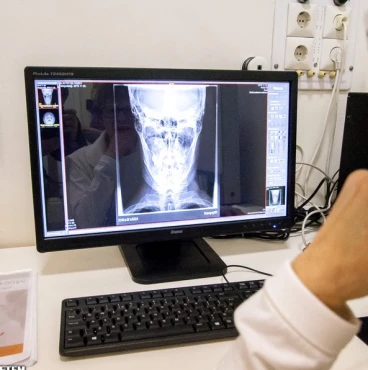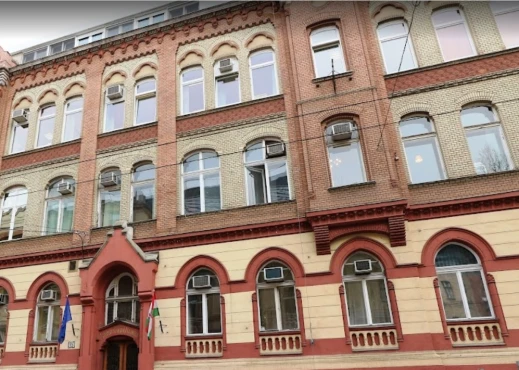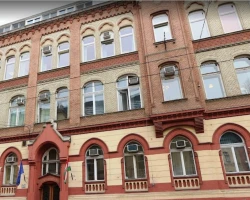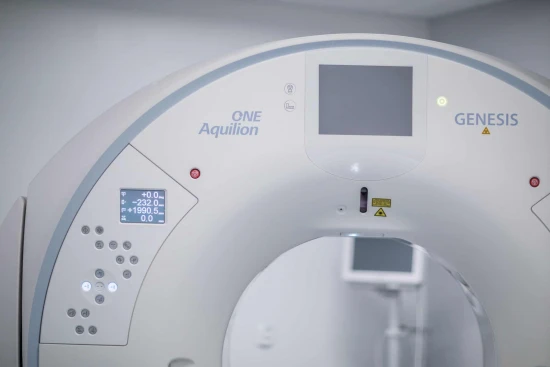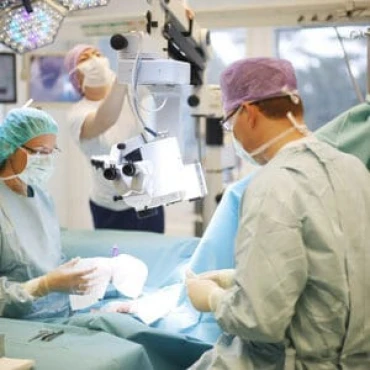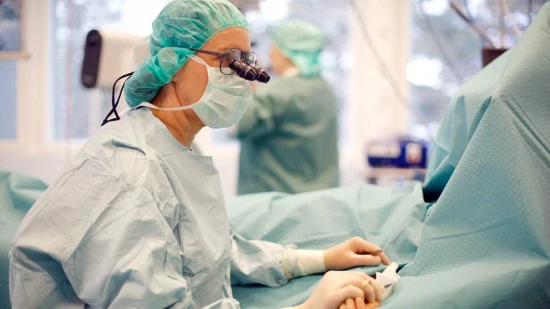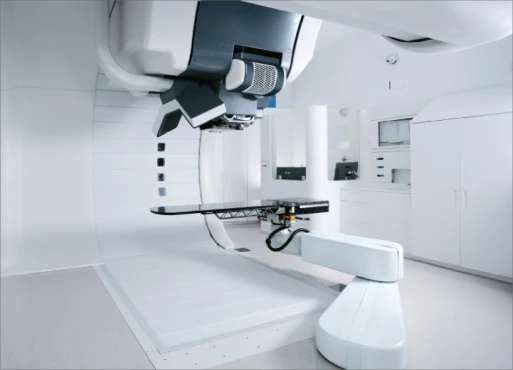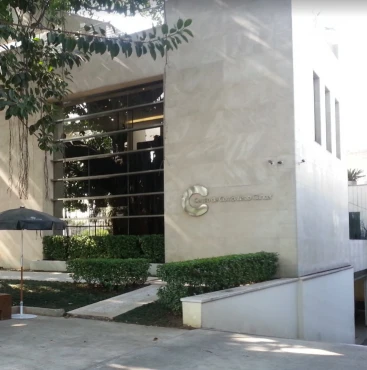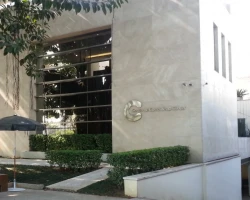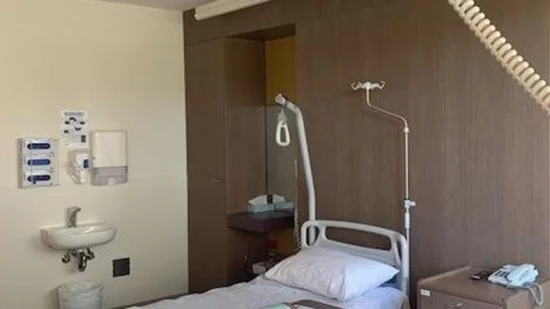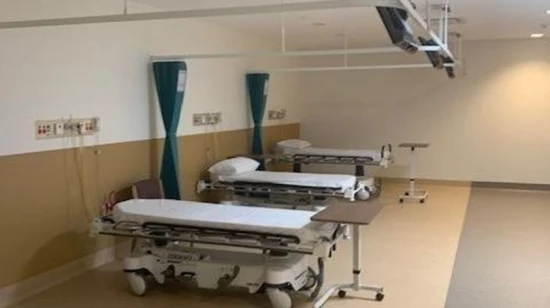Introduction
Cancer of the jaw is a malignant neoplasm originating from epithelial tissue. The clinical picture is determined by the localization of the primary focus of the lesion. The first signs of neoplastic neoplasm of the maxilla are similar to the symptoms of chronic maxillary sinusitis. When the mandibular bone is affected, intact teeth acquire mobility of 2-3 degrees, numbness of the lower lip occurs. Disseminated cancer of the jaw proceeds with intense pain syndrome. Diagnosis of the disease includes the collection of complaints, clinical examination, radiography, pathohistologic examination. Treatment of jaw cancer is combined. Along with tumor removal, courses of radiation therapy are indicated.
General Information
Cancer of the jaw is a pathological process of primary or secondary origin, which is based on the transformation of healthy bone tissue cells into tumor cells. Malignant neoplasms of the upper jaw are diagnosed more often. In 60% of cases, the neoplastic process develops from the epithelial tissue lining the maxillary sinuses.
According to the histologic structure, jaw cancer is predominantly squamous cell keratinizing. The main group of patients who come to the clinic are people aged after 45-50 years. Ophthalmologist and otorhinolaryngologist take part in the examination of the patient along with the surgeon-oncologist. Treatment of malignant neoplasm is combined. The prognosis for jaw cancer is unfavorable, five-year survival is observed in 30% of patients.
Causes
With central (true) cancer of the jaw, the tumor originates from the islets of Malasse. Secondary neoplasms occur when cancer cells sprout deep into the bone tissue from the maxillary sinus, alveolar outgrowth, palate, lateral surfaces of the tongue, floor of the mouth. Most often, the neoplastic process of the upper jaw develops in patients against the background of chronic inflammation of the mucosa of the maxillary sinus. The prolonged course of maxillary sinusitis leads to the transformation of cells of epithelial tissue.
The primary causes of secondary cancer of the jaw can also be trauma to the mucosa, exposure to ionizing radiation, bad habits (smoking, chewing nasal), occupational hazards (working in hot shops or dusty rooms), poor diet (excessive use of spicy, spicy foods). In addition, there is a risk of developing cancer of the jaw of metastatic origin in cancer patients with tumors of the kidneys, stomach, lungs.
Symptoms of Jaw Cancer
In the initial stage of carcinogenesis, complaints are usually absent. With cancer of the jaw, originating from the epithelium of the maxillary sinus, patients indicate nasal congestion, difficult nasal breathing, the presence of mucous discharge with an admixture of blood. When the primary tumor is located in the area of the upper-internal corner of the maxillary sinus, in addition to the above symptoms, there is thickening, deformation of the lower medial wall of the orbit.
In jaw cancer, developed due to the spread of malignant tumor cells into the bone from the lateral parts of the sinus, there is numbness of the skin and mucosa of the suborbital area. Patients complain of severe pain in the area of the molars. With tumors of the lower jaw, there may be paresthesia of the lower lip, chin tissues. Intact teeth become mobile. The III-IV stage of jaw cancer is evidenced by the development of exophthalmos, impaired mouth opening, the accession of neurological symptoms.
In the neoplastic process of bone tissue deformation of the jaw occurs, there is a high risk of pathological fractures. In the absence of proper treatment, areas of ulceration may appear on the skin. If the primary focus of lesions in jaw cancer is a malignant tumor of the mucous membrane, the examination reveals a cancerous ulcer or mucosal overgrowths. A neoplasm with endophytic type of growth is a crater-shaped ulcerous surface with an infiltrated bottom and compacted edges. With exophytic tumors in the oral cavity, mushroom-shaped growths with a pronounced infiltrate at the base are found.
Diagnosis
Diagnosis of jaw cancer is based on the analysis of complaints, data of physical examination, as well as radiological, histological, radioisotope methods of research. During the oral examination of patients with jaw cancer, the dentist detects asymmetry, facial deformity, possibly ulceration of the skin. Often with cancer of the jaw diagnose paresthesia of the area that corresponds to the localization of the malignant tumor. In the course of palpatory examination, bone thickening is detected. Teeth located in the area of the lesion are mobile. Vertical percussion is positive.
With cancer of the jaw of secondary origin, an ulcer with signs of malignization or papillary growths are detected on the mucosa, at the base of which a pronounced infiltrate is determined by palpation. Lymph nodes in patients with cancer of the jaw are enlarged, thickened, painless.
Radiographically, diffuse rarefaction of the bone is detected in jaw cancer. Reparative as well as periosteal reaction is not observed. To confirm the diagnosis, cytologic examination of the material taken from the surface of the ulcer is shown. With primary cancer of the jaw, a pathohistologic analysis of the trepanized section of the affected bone is performed. To detect a malignant tumor, a radioisotope method can also be used.
Differentiate jaw cancer with chronic osteomyelitis, specific diseases of the jaw, benign and malignant odontogenic and osteogenic tumors. The patient is examined by maxillofacial surgeon, oncologist, ophthalmologist, otorhinolaryngologist.
Jaw Cancer Treatment
When jaw cancer is detected, combined treatment is used. Along with the removal of the neoplasm, a course of pre- and postoperative radiation therapy is carried out. At the preparatory stage in dentistry, impressions are taken for the fabrication of prostheses to replace the defect. Regarding mobile teeth adhere to conservative tactics, as after surgery, the risk of dissemination of cancer cells by the network of lymphatic vessels increases. If several enlarged mobile cervical lymph nodes or at least one fused lymph node are detected in jaw cancer, a cervical dissection is performed.
Depending on the clinical situation, Vanach, Kreil, or fascial-futlar dissection may be used. The affected area of bone tissue in jaw cancer is resected together with the periosteum. If the tumor sprouts into adjacent areas, radical surgery is performed, expanding the boundaries of the surgical field. In case of spread of jaw cancer to the base of the skull, the use of gamma radiation is indicated. Prognosis in jaw cancer depends on the stage of the disease, age, immune status of the patient, choice of treatment method.

















